Health Benefits of Boroi Indian Jujube Leaves.
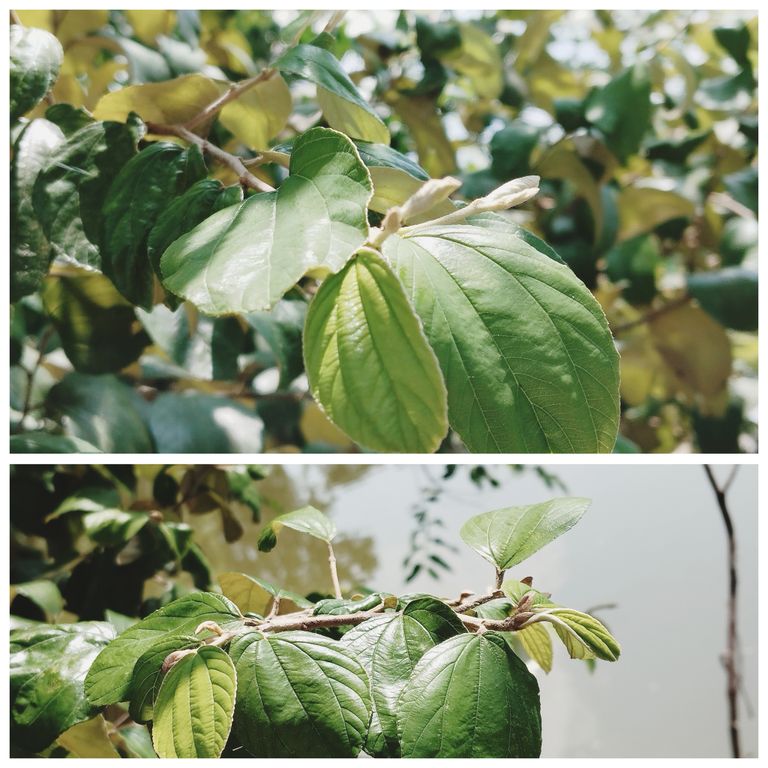
Boroi, also known as Indian Jujube (Ziziphus mauritiana), is a tropical fruit-bearing tree that is widely known for its edible fruits. However, the leaves of this tree, commonly known as boroi leaves, also possess several medicinal and health benefits. These leaves have been traditionally used in various cultures, especially in South Asian countries, for treating a range of ailments. In this blog, we will explore the nutritional value and various health benefits of boroi leaves, highlighting why they should be recognized as a natural remedy in modern herbal medicine.
1. Rich in Nutrients
Boroi leaves are a rich source of vitamins, minerals, and antioxidants. They contain high amounts of vitamin C, flavonoids, and phenolic compounds, which contribute to their antioxidant properties. These antioxidants help in neutralizing harmful free radicals in the body, thus reducing oxidative stress and preventing cell damage. The leaves also contain essential minerals like calcium, iron, and magnesium, which are vital for various bodily functions.
2. Boosts Immunity
Due to their high vitamin C content, boroi leaves play a significant role in boosting the immune system. Vitamin C is well-known for its ability to strengthen the body’s defense mechanism against infections and illnesses. Regular consumption of boroi leaves, whether in the form of tea or other preparations, can help enhance the body's ability to fight off colds, flu, and other common infections.
3. Anti-inflammatory Properties
Boroi leaves possess potent anti-inflammatory properties, making them effective in reducing inflammation in the body. Inflammation is a natural immune response, but chronic inflammation can lead to various health issues, including arthritis, heart disease, and even cancer. The leaves contain bioactive compounds such as saponins and flavonoids that help in lowering inflammation levels, thus offering relief to those suffering from inflammatory conditions.
4. Promotes Digestive Health
For centuries, boroi leaves have been used in traditional medicine to treat digestive issues. The leaves contain natural compounds that aid in improving digestion and soothing the digestive tract. They can be used to relieve constipation, bloating, and indigestion. Additionally, boroi leaves help in maintaining gut health by promoting the growth of healthy gut bacteria, thereby preventing issues like irritable bowel syndrome (IBS) and other gastrointestinal disorders.
5. Helps in Wound Healing
The antibacterial and wound-healing properties of boroi leaves make them an effective remedy for treating cuts, wounds, and skin infections. In traditional medicine, the leaves are often ground into a paste and applied to wounds to promote faster healing. Their antibacterial properties help prevent infections while their anti-inflammatory qualities reduce swelling and pain. Moreover, the presence of tannins in the leaves helps in clotting and sealing the wounds, which accelerates the healing process.
6. Improves Skin Health
Boroi leaves are widely recognized for their benefits to skin health. The antioxidants present in these leaves protect the skin from free radical damage, which is one of the leading causes of premature aging. Using boroi leaf extracts or paste on the skin can help reduce the appearance of wrinkles, fine lines, and age spots. Additionally, the anti-inflammatory properties of the leaves help in soothing skin conditions such as eczema, acne, and rashes. Regular use of boroi leaves can result in clearer, smoother, and more youthful-looking skin.
7. Supports Respiratory Health
Boroi leaves have been traditionally used to treat respiratory problems such as asthma, bronchitis, and coughs. The leaves have expectorant properties that help in clearing out mucus and phlegm from the respiratory tract, making it easier to breathe. Inhaling steam from boiled boroi leaves or drinking tea made from the leaves can provide relief from congestion and other respiratory issues. Their anti-inflammatory properties also help reduce inflammation in the airways, making them beneficial for asthma patients.
8. Regulates Blood Sugar Levels
For individuals with diabetes or those at risk of developing the condition, boroi leaves can be an effective natural remedy for regulating blood sugar levels. The leaves contain compounds that help in improving insulin sensitivity and reducing glucose levels in the blood. Drinking boroi leaf tea regularly can aid in controlling blood sugar levels, thus preventing sudden spikes and crashes. However, individuals with diabetes should consult their healthcare provider before incorporating boroi leaves into their daily routine to avoid any complications.
9. Promotes Weight Loss
Boroi leaves can be a helpful aid in weight loss efforts. Their high fiber content helps in promoting a feeling of fullness, thereby reducing overall food intake. Additionally, the leaves improve digestion and enhance metabolic activity, both of which are crucial for effective weight loss. Drinking boroi leaf tea or using the leaves in food preparations can help regulate appetite and prevent overeating, making it easier to achieve weight loss goals.
10. Improves Heart Health
The antioxidants and anti-inflammatory compounds present in boroi leaves contribute to heart health by reducing the risk of cardiovascular diseases. The leaves help in lowering bad cholesterol (LDL) levels while increasing good cholesterol (HDL) levels, thereby promoting better heart health. Additionally, the anti-inflammatory properties help in reducing inflammation in the blood vessels, thus lowering the risk of conditions like atherosclerosis, heart attacks, and strokes.
11. Natural Remedy for Anxiety and Stress
Boroi leaves have been used in traditional medicine for their calming and sedative effects. The leaves contain certain compounds that help in calming the nervous system and reducing feelings of anxiety and stress. Drinking boroi leaf tea before bed can promote relaxation and improve sleep quality. The leaves are also known to have mild sedative effects, making them a natural remedy for insomnia and other sleep disorders.
12. Antimicrobial Properties
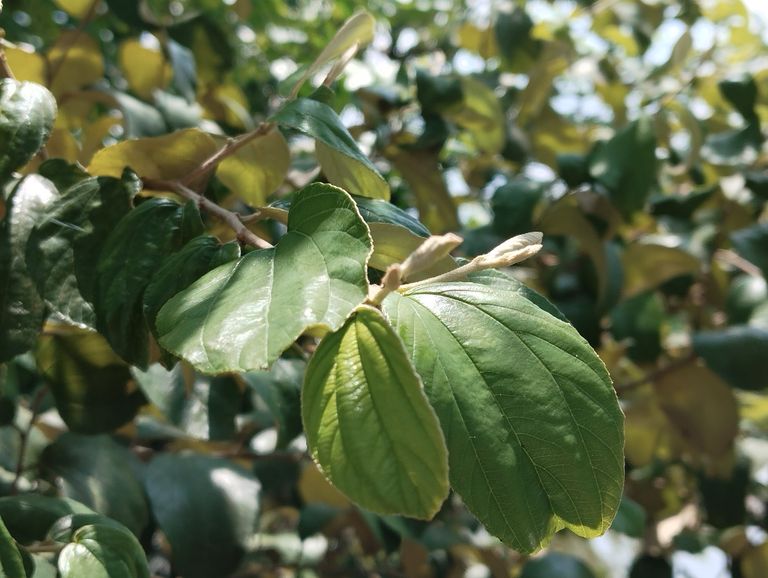
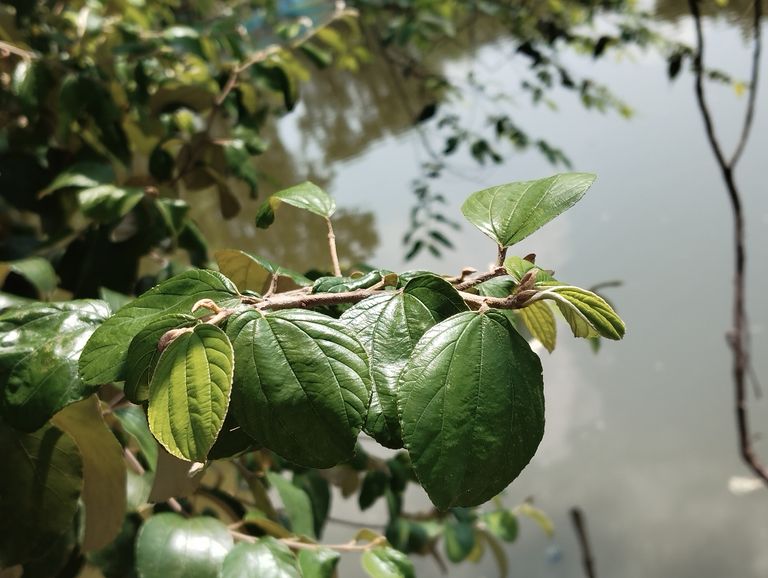
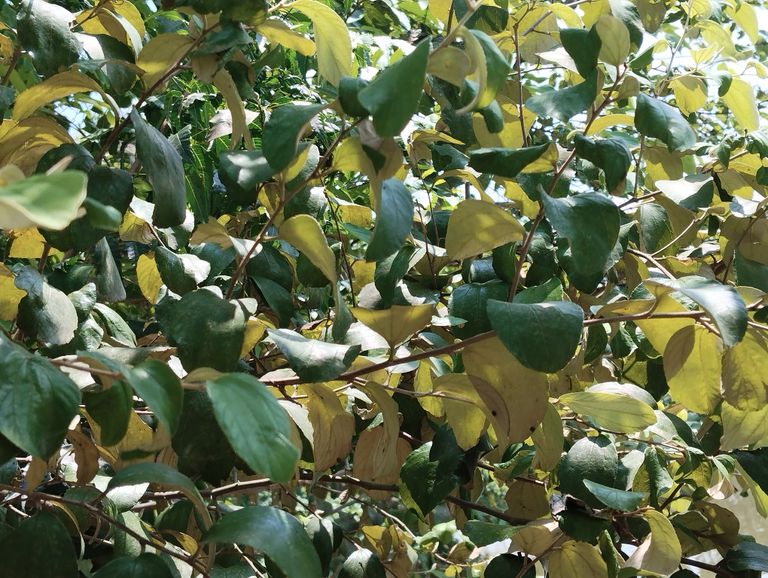
The antimicrobial properties of boroi leaves make them effective in fighting off harmful bacteria, viruses, and fungi. Studies have shown that extracts from boroi leaves can inhibit the growth of various pathogens, including E. coli and Staphylococcus aureus, both of which are responsible for a range of infections. This makes boroi leaves a useful natural remedy for treating bacterial infections and boosting overall immune health.
How to Use Boroi Leaves
There are various ways to incorporate boroi leaves into your daily routine to reap their health benefits:
- Boroi Leaf Tea: One of the most common ways to consume boroi leaves is by brewing them into a tea. Simply boil a handful of fresh or dried leaves in water, strain, and drink. This tea can be consumed daily for its numerous health benefits.
- Boroi Leaf Paste: The leaves can be ground into a paste and applied topically to wounds, cuts, or skin irritations for faster healing.
- Inhalation: For respiratory issues, boiling the leaves in water and inhaling the steam can help in clearing congestion and relieving asthma symptoms.
- Supplements: Boroi leaf extracts are also available in supplement form for those who prefer a more convenient option.
Final Thoughts
Boroi leaves are a powerful natural remedy with a wide range of health benefits. From boosting immunity and improving digestive health to promoting skin healing and heart health, these leaves can play an essential role in maintaining overall well-being. Incorporating boroi leaves into your daily health routine can provide a natural and effective way to support various aspects of your health.
While boroi leaves are generally considered safe for consumption, it is always recommended to consult with a healthcare professional before using them, especially for individuals with pre-existing health conditions or those who are pregnant or breastfeeding.
Introduction to Boroi (Jujube) Cultivation: A Comprehensive Guide
Boroi, also known as jujube (Ziziphus mauritiana), is a tropical fruit native to South Asia but has gained popularity in various parts of the world due to its nutritional benefits and adaptability to different climatic conditions. In Bangladesh, India, and many Southeast Asian countries, Boroi cultivation has become a lucrative agricultural venture. Farmers are now leaning towards the commercial production of Boroi due to its high yield, resistance to pests, and favorable market demand. This blog aims to provide an in-depth guide to Boroi cultivation, covering all aspects, from land preparation to harvesting.
1. Varieties of Boroi
There are several varieties of Boroi grown across different regions. Understanding the type of Boroi best suited for your climatic and soil conditions is crucial. The main varieties include:
- Apple Boroi: Known for its crunchy texture and apple-like appearance.
- BAU Kul: A high-yielding variety developed by Bangladesh Agricultural University.
- Kabul Boroi: A popular choice for its larger size and sweeter taste.
- Bokul Boroi: Smaller in size but packed with a sweet and sour flavor.
Each variety has its own cultivation period, resistance to pests, and market price. Therefore, choosing the right variety is essential for maximizing profit.
2. Climate and Soil Requirements
Boroi thrives in tropical and subtropical climates, where temperatures range from 25°C to 35°C. It requires full sunlight, making it ideal for areas that receive ample sunshine throughout the year. The plant is drought-resistant but needs adequate moisture during the initial stages of growth.
- Soil Type: Boroi can grow in a wide variety of soils, from loamy to sandy soils, but well-drained soil with a pH level of 6.0 to 7.5 is ideal. Good drainage is crucial as waterlogging can damage the roots.
- Temperature: Boroi prefers warm weather for proper fruiting and flowering. However, it can also withstand short periods of cold.
3. Land Preparation
Before planting Boroi, proper land preparation is crucial. The land should be plowed and leveled to ensure even distribution of nutrients and water. Depending on the variety and local conditions, spacing between trees should be around 6-8 meters, allowing enough room for growth and easy management.
- Pit Preparation: Pits of 60 cm x 60 cm x 60 cm should be dug. Organic manure like cow dung or compost is added to the pits to enrich the soil.
- Fertilization: Along with organic manure, chemical fertilizers such as urea, TSP (Triple Superphosphate), and MOP (Muriate of Potash) should be applied during pit preparation for healthy growth.
4. Planting of Boroi
The best time for planting Boroi is during the monsoon or after the rainy season when the soil retains moisture but is not waterlogged. Saplings are usually propagated through seeds or grafting. Grafted saplings are preferred as they produce fruit faster and are true to type. Once the saplings are planted, they should be watered immediately, and mulching around the base can help retain moisture.
5. Irrigation and Water Management
Although Boroi is drought-resistant, regular watering is necessary, especially during the initial stages of growth and during the fruiting period. Irrigation should be provided every 10-15 days during the dry season. Drip irrigation is an effective method as it conserves water and ensures that the plants receive moisture directly at the roots. Avoid waterlogging at all costs, as this can lead to root rot.
6. Pruning and Training
Pruning is essential for Boroi cultivation to maintain the tree's shape and improve air circulation, which helps in controlling diseases. Pruning is typically done after harvesting. Unwanted branches and diseased parts should be removed to allow sunlight penetration and encourage new growth.
Training the tree to a central leader system during the early stages of growth will help develop a strong framework. This ensures that the plant bears fruit evenly and reduces the risk of branch breakage due to the weight of the fruit.
7. Fertilization
Boroi trees require balanced fertilization for optimal growth and fruiting. A combination of organic and chemical fertilizers works best. The application of fertilizers should be done in three stages:
- Pre-flowering: During this stage, nitrogen-rich fertilizers like urea are applied to promote vegetative growth.
- Fruiting: During the fruiting stage, potassium-based fertilizers such as MOP help improve the size and quality of the fruit.
- Post-harvest: After harvesting, organic fertilizers and a small amount of chemical fertilizers should be added to replenish the soil nutrients.
8. Pest and Disease Management
While Boroi is relatively resistant to pests and diseases, certain issues may arise, especially in humid climates. Common pests include fruit flies, aphids, and borers, which can damage the fruits and leaves.
- Fruit Flies: These pests can be controlled using pheromone traps or by applying organic insecticides.
- Leaf Spot: A common fungal disease that causes brown spots on the leaves. It can be controlled by spraying fungicides like copper oxychloride.
Integrated pest management (IPM) strategies, including biological controls and minimal use of chemicals, should be adopted to ensure healthy crops and environmental sustainability.
9. Flowering and Pollination
Boroi flowers are small and greenish-white, attracting various pollinators such as bees and butterflies. Boroi trees typically start flowering after 2-3 years of planting. Proper pollination is essential for fruit set, so ensure the presence of pollinators in the area. Some varieties may also benefit from hand pollination to increase yield.
10. Harvesting
Boroi fruits are ready for harvest 5-6 months after flowering, depending on the variety. Harvesting is usually done manually, and care should be taken not to damage the fruits. Overripe fruits tend to fall off the tree, so timely harvesting is essential to avoid losses.
- Yield: The yield of Boroi varies depending on the variety and growing conditions. On average, a well-maintained Boroi tree can produce 40-50 kg of fruit per year.
- Post-harvest: After harvesting, the fruits should be cleaned and sorted according to size and quality. Boroi has a short shelf life, so it should be sold or processed quickly. Fruits can also be dried, candied, or processed into jams and jellies.
11. Marketing and Economic Potential
Boroi has a growing demand in both local and international markets due to its nutritional value and versatility. Fresh Boroi is sold in local markets, but processed products like dried Boroi, jams, and jellies are also gaining popularity. Farmers can also explore export opportunities, especially for dried Boroi and other processed items.
The economic potential of Boroi cultivation is significant. With proper care and management, a Boroi orchard can provide a steady income for many years. The low input costs and high returns make it an attractive option for small and medium-scale farmers.
12. Health Benefits of Boroi
Boroi is packed with essential nutrients, making it a healthy addition to the diet. It is rich in vitamin C, antioxidants, and dietary fiber. The fruit has been traditionally used in Ayurvedic and traditional medicine for its ability to boost immunity, improve digestion, and promote overall well-being. The seeds and leaves of the Boroi tree also have medicinal properties and are used in various treatments.
Conclusion
Boroi cultivation is a sustainable and profitable agricultural venture, especially in tropical regions. With the right variety selection, proper land preparation, and effective pest management, farmers can achieve high yields and good-quality fruits. As demand for Boroi continues to rise, both locally and internationally, the opportunities for farmers are immense. Whether you are a small-scale farmer looking to diversify your crops or a commercial grower seeking a high-return fruit crop, Boroi cultivation holds great promise.
By following the practices outlined in this guide, you can ensure a successful Boroi farming operation, contributing not only to your financial well-being but also to the sustainable development of agriculture in your region.
Medicinal Benefits of Boroi (Jujube) Leaves
Boroi, also known as jujube or Indian plum, is a tropical fruit tree that belongs to the Rhamnaceae family. It is native to South Asia but is now widely grown in many parts of the world. While the fruit of the boroi tree is well-known for its sweet-tart flavor and nutritional benefits, the leaves of the boroi tree are also highly valued in traditional medicine for their wide range of therapeutic properties. This article explores the medicinal benefits of boroi leaves, highlighting their role in promoting health and wellness.
1. Rich in Antioxidants
Boroi leaves are a rich source of antioxidants, which play a crucial role in neutralizing free radicals in the body. Free radicals are unstable molecules that can cause oxidative stress, leading to cell damage and contributing to the development of various diseases, including cancer, heart disease, and premature aging. The antioxidants present in boroi leaves, such as flavonoids, polyphenols, and vitamins, help protect the body from oxidative damage, promoting overall health and longevity.
2. Anti-Inflammatory Properties
Inflammation is the body’s natural response to injury or infection. However, chronic inflammation can contribute to the development of many diseases, including arthritis, diabetes, and heart disease. Boroi leaves possess potent anti-inflammatory properties that can help reduce inflammation in the body. Traditional medicine often uses boroi leaf extracts to treat inflammatory conditions such as arthritis, joint pain, and skin irritations. Regular consumption of boroi leaf tea or application of boroi leaf paste to the affected area can provide relief from inflammation and promote healing.
3. Promotes Digestive Health

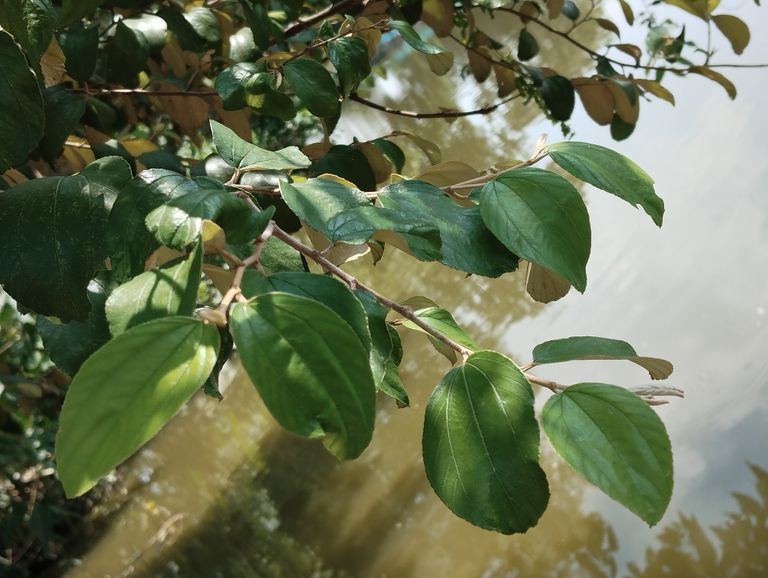
Boroi leaves have been traditionally used to improve digestion and treat gastrointestinal disorders. They contain natural compounds that can stimulate digestive enzymes, improve bowel movements, and prevent constipation. The leaves also have mild laxative properties, making them useful for treating indigestion, bloating, and other digestive issues. Additionally, boroi leaves are believed to help cleanse the digestive tract and remove toxins, promoting a healthy digestive system.
4. Helps Control Blood Sugar Levels
One of the most significant medicinal benefits of boroi leaves is their ability to regulate blood sugar levels. This makes them particularly beneficial for individuals with diabetes or those at risk of developing the condition. Boroi leaves contain compounds that can help improve insulin sensitivity, allowing the body to use glucose more efficiently. Regular consumption of boroi leaf tea may help lower blood sugar levels and prevent sudden spikes, making it a natural remedy for managing diabetes.
5. Supports Respiratory Health
Boroi leaves have been used in traditional medicine to treat respiratory conditions such as cough, asthma, and bronchitis. The leaves possess expectorant properties, which can help loosen mucus and clear the airways, making it easier to breathe. Boroi leaf extracts are often used to relieve chest congestion, reduce coughing, and soothe irritated respiratory passages. Inhaling the steam from boiled boroi leaves or drinking boroi leaf tea can provide relief from respiratory issues and improve overall lung function.
6. Boosts Immunity
A strong immune system is essential for protecting the body from infections and diseases. Boroi leaves are rich in vitamins, minerals, and other nutrients that help strengthen the immune system. The antioxidants and anti-inflammatory compounds present in the leaves can help the body fight off infections and reduce the severity of illnesses. Boroi leaves also contain antimicrobial properties that can inhibit the growth of harmful bacteria and viruses, further boosting the body’s defense mechanisms.
7. Promotes Skin Health
Boroi leaves are commonly used in traditional medicine to treat various skin conditions. The leaves contain natural compounds that have antibacterial, antifungal, and anti-inflammatory properties, making them effective in treating skin infections, rashes, and wounds. Applying boroi leaf paste to the skin can help reduce redness, swelling, and irritation, promoting faster healing. Boroi leaf extracts are also used in skincare products to help maintain healthy, youthful-looking skin by preventing wrinkles, fine lines, and other signs of aging.
8. Acts as a Natural Sedative
Boroi leaves have been used as a natural remedy for insomnia and other sleep disorders. The leaves contain compounds that have a calming effect on the nervous system, helping to reduce anxiety, stress, and restlessness. Drinking boroi leaf tea before bedtime can help.